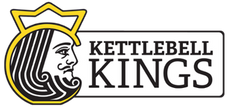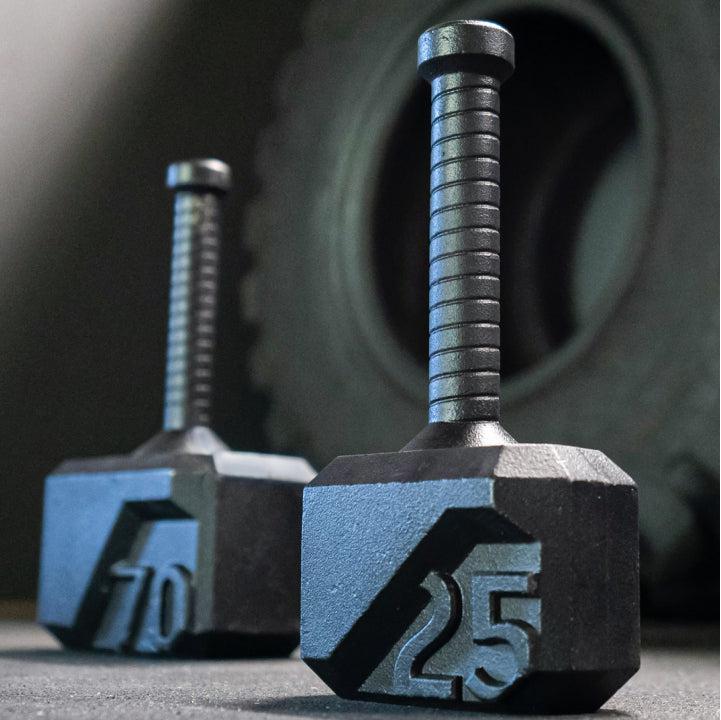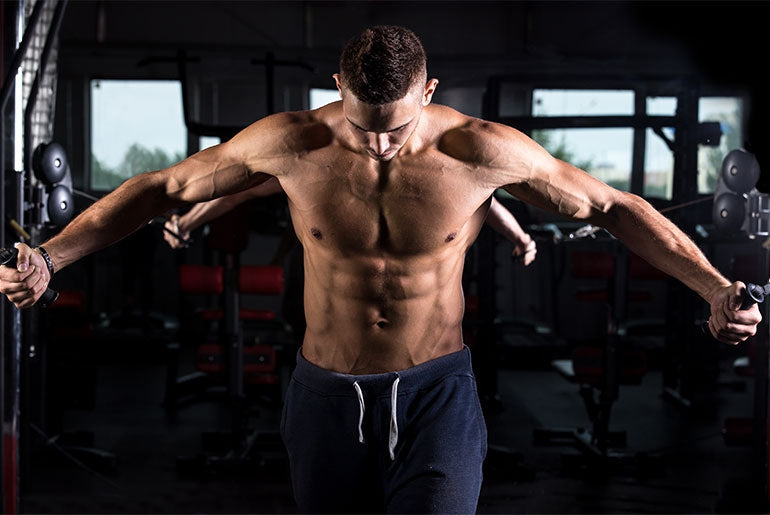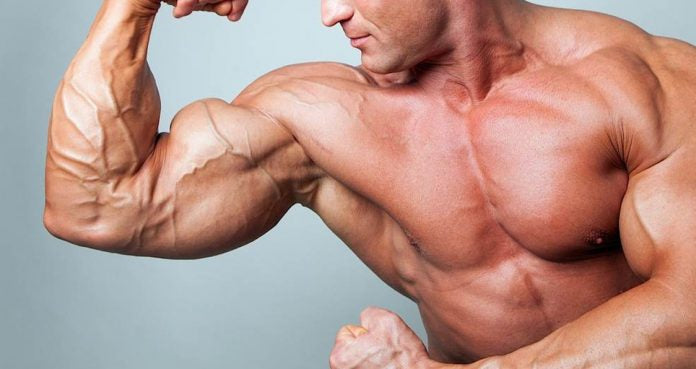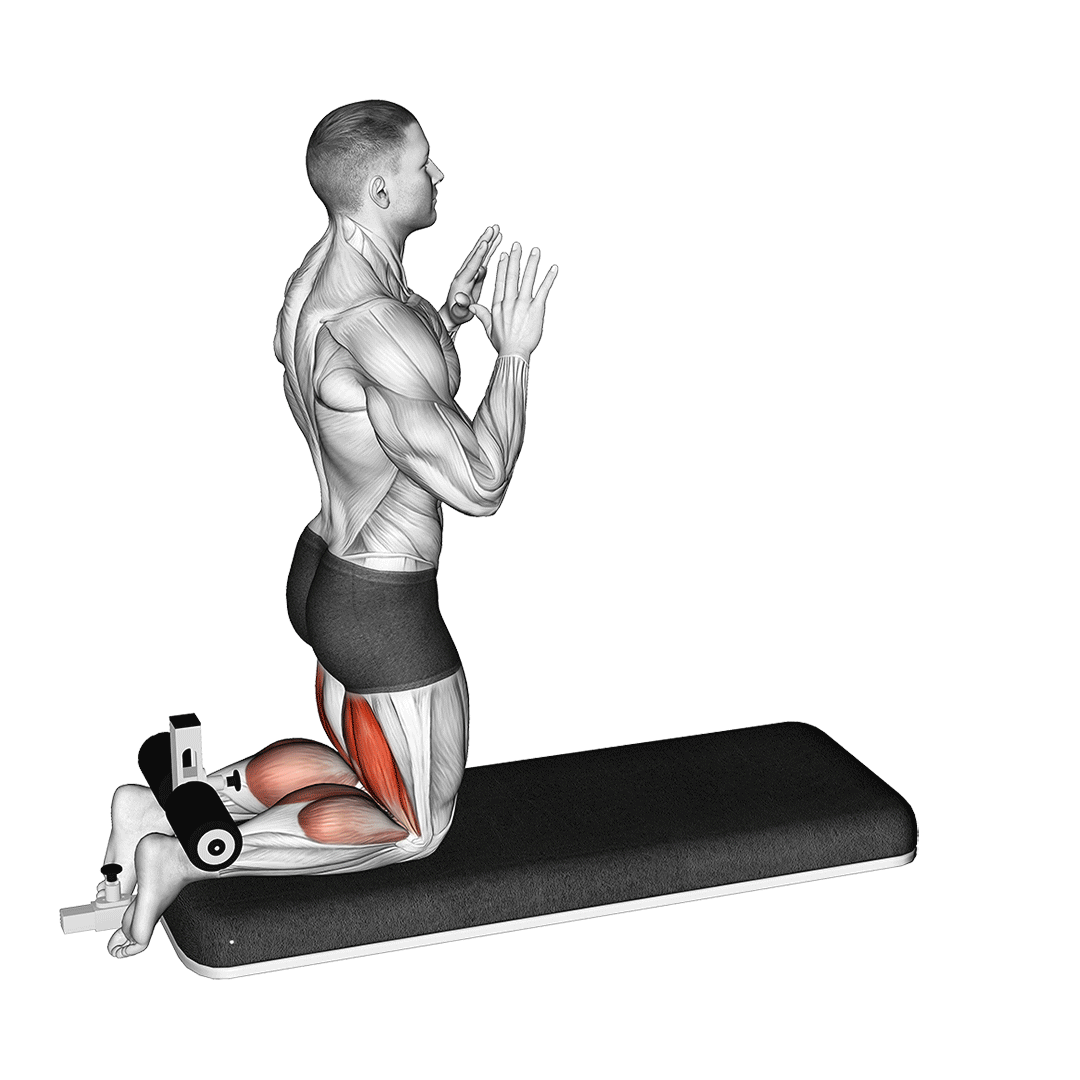Chisel Your Physique - Master Upper Chest Workouts for a Sculpted Upper Body
The desire for a well-defined upper body is a common goal among fitness enthusiasts. It's not just about aesthetics; it's about functional strength, posture, and achieving a balanced physique. One key component in this journey is to focus on the upper chest. In this comprehensive guide, we will explore the intricacies of upper chest workouts and equip you with the knowledge and routines necessary to carve a chiseled upper body.
The Anatomy of Upper Chest
To effectively target the upper chest, it's crucial to understand its anatomy. The primary muscle at play is the clavicular head of the pectoralis major. This muscle group is responsible for shoulder flexion and contributes significantly to your upper body aesthetics. Its development not only enhances your physique but also promotes functional strength and balanced muscle growth.
Benefits of Upper Chest Development
Developing a strong upper chest brings about a myriad of benefits
Preparing for Upper Chest Workouts
Safety First
Before diving into your upper chest workouts, it's essential to prioritize safety:
-
Warm-Up
- Begin your workout with a proper warm-up. This might include light cardio, dynamic stretching, or mobility exercises. A warm-up increases blood flow, loosens joints, and reduces the risk of injury.
-
Right Equipment
- Ensure you have access to the right equipment. Whether it's a bench, barbell, or dumbbell, having the necessary tools for your upper chest workout is crucial.
- Workout Environment
- Create a safe and focused workout space. Ensure the area is free from clutter and distractions. A well-organized workout environment contributes to an effective session.
Upper Chest Workout Exercises
To maximize the effectiveness of your upper chest workouts, maintaining proper form and technique is crucial. Poor form not only increases the risk of injury but also reduces the engagement of target muscle groups. Let's delve into the specifics of maintaining proper form for some of these exercises:
Incline Bench Press
The incline bench press is a compound upper-body exercise that primarily targets the upper chest and triceps.
How to do Incline Bench Press:
- Lie on an incline bench (usually set at a 30-45 degree angle) with your feet flat on the floor.
- Grip the barbell with a slightly wider than shoulder-width grip, and lower it to your upper chest.
- Push the barbell back up to the starting position.
- Keep your back and buttocks firmly on the bench throughout.
Variations:
- Incline Dumbbell Fly: Instead of pressing, perform a fly motion with dumbbells on an incline bench.
- Dumbbell Incline Bench Press: Similar to the incline bench press, but with dumbbells for increased range of motion and muscle engagement.
Cable Crossovers
Cable crossovers are isolation exercises that focus on the chest muscles, providing a deep stretch and contraction.
How to do Cable Crossovers:
- Stand in the middle of a cable crossover machine, grasping the handles in each hand.
- Step forward with one foot, slightly lean forward, and bring your arms together in front of your chest.
- Slowly return to the starting position, maintaining tension on the chest throughout.
Benefits: Isolates the chest muscles, enhances definition, and improves muscular endurance.
Variations:
- High Cable Crossovers: Adjust the pulleys to a higher position to target the upper chest.
- Low Cable Crossovers: Position the pulleys low to emphasize the lower chest.
Push-Ups with Elevation
Elevation push-ups add an extra challenge to traditional push-ups by targeting the upper chest and shoulders.
How to do Elevation Push-Ups:
- Place your hands on two raised surfaces (e.g., blocks or steps) at shoulder-width distance.
- Assume the push-up position, keeping your body straight.
- Lower your chest towards the elevated surfaces and push back up.
Benefits: Enhances chest and shoulder strength, adds variety to push-up routines, and develops upper chest muscles.
Variations:
- Decline Push-Ups: Place your feet on an elevated surface for a different angle and challenge.
- One-Arm Push-Ups: Perform push-ups with one arm on an elevated surface, increasing the difficulty.
Dumbbell Pullovers
Dumbbell pullovers work the chest, back, and serratus anterior muscles, promoting a balanced upper body.
How to do Dumbbell Pullovers:
- Lie on your back on a bench with your head and shoulders hanging slightly off the end.
- Hold a dumbbell with both hands above your chest, arms slightly bent.
- Lower the weight behind your head, maintaining a slight bend in your elbows.
- Raise the dumbbell back to the starting position.
Benefits: Improves chest expansion, engages the back and chest muscles, and promotes shoulder stability.
Variations:
- Barbell Pullovers: Perform the same movement using a barbell instead of a dumbbell.
- Stability Ball Pullovers: Do pullovers on a stability ball to engage core muscles for balance.
These exercises can be incorporated into a comprehensive chest workout routine, and their variations provide options to target specific areas and keep your workouts challenging and effective.
Pec Deck Flyes
Pec deck flyes are isolation exercises that specifically target the pectoral muscles, providing an excellent chest stretch and contraction.
How to do Pec Deck Flyes:
- Sit on the pec deck machine with your back against the pad.
- Place your forearms on the machine's handles, and position your elbows at 90-degree angles.
- Squeeze your chest muscles to bring the handles together in front of you.
- Slowly return to the starting position, feeling the stretch in your chest.
Benefits: Isolates and strengthens the chest muscles, enhances muscle definition, and is safer on the shoulders compared to some chest exercises.
Variations:
- Machine Flyes: Use a chest fly machine, which provides controlled resistance.
- Standing Cable Flyes: Perform a similar motion using cable crossover equipment for a different angle.
Incline Push-Ups:
Incline push-ups are a variation of traditional push-ups, emphasizing the upper chest and shoulders.
How to do Incline Push-Ups:
- Place your hands on an elevated surface (e.g., a bench or step) at shoulder-width distance.
- Assume the push-up position with your feet on the ground and body straight.
- Lower your chest toward the elevated surface, and push back up.
Benefits: Targets the upper chest and shoulders, promotes strength and endurance, and is more accessible for beginners.
Variations:
- Decline Push-Ups: Place your feet on an elevated surface to emphasize the lower chest.
- One-Arm Incline Push-Ups: Increase the challenge by performing push-ups with one arm elevated.
Guillotine Press
Guillotine press, also known as neck press, focuses on the upper chest, shoulders, and triceps.
How to do Guillotine Press:
- Lie on a flat bench with your head off the end, allowing the barbell to pass over your neck.
- Grip the barbell with a wide grip, lowering it to your neck or upper chest.
- Push the barbell back up to the starting position.
Benefits: Isolates the upper chest and shoulders, increases upper body strength, and can be an effective variation for chest development.
Variations:
- Dumbbell Guillotine Press: Similar to the barbell guillotine press, but using dumbbells for a different range of motion.
- Smith Machine Guillotine Press: Offers a more controlled motion and reduced risk compared to the traditional guillotine press.
Weighted Dip
Weighted dips are a compound exercise that primarily targets the chest, triceps, and shoulders.
How to do Weighted Dip:
- Attach a weight belt with a weight plate to your body.
- Grip parallel bars on a dip station and lift yourself up, keeping your body straight.
- Lower your body by bending your elbows and then push back up to the starting position.
Benefits: Increases chest and triceps strength, promotes muscle growth, and is effective for overall upper body development.
Variations:
Close-Grip Bench Press
The close-grip bench press is a chest exercise that primarily targets the triceps, with some chest engagement.
How to do Close-Grip Bench Press:
- Lie on a flat bench and grip the barbell with your hands closer together than shoulder-width.
- Lower the barbell to your chest, and push it back up to the starting position.
Benefits: Enhances triceps strength, complements chest development, and improves pressing power.
Variations:
- Close-Grip Push-Ups: Perform a similar movement using your body weight.
- Close-Grip Dumbbell Press: Replace the barbell with dumbbells for added range of motion.
Incorporate these exercises into your chest workout routine while keeping your fitness level and goals in mind. Always use proper form and consider safety when using heavy weights or equipment.
Sample Upper Chest Workout Routines
Now that you're familiar with the exercises, let's explore some sample workout routines suitable for various fitness levels.
Beginner Chest Workout
- Incline Bench Press: 3 sets of 10-12 reps
- Pec Deck Flyes: 3 sets of 10-12 reps
- Push-Ups with Elevation: 3 sets of 8-10 reps
- Incline Push-Ups: 3 sets of 8-10 reps
Intermediate Chest Workout
- Incline Bench Press: 4 sets of 8-10 reps
- Dumbbell Pullovers: 3 sets of 10-12 reps
- Cable Crossovers: 4 sets of 10-12 reps
- Guillotine Press: 3 sets of 8-10 reps
- Weighted Dips: 3 sets of 8-10 reps
Advanced Chest Workout
- Incline Bench Press: 5 sets of 6-8 reps
- Pec Deck Flyes: 4 sets of 8-10 reps
- Dumbbell Pullovers: 4 sets of 8-10 reps
- Cable Crossovers: 5 sets of 10-12 reps
- Guillotine Press: 4 sets of 6-8 reps
- Weighted Dips: 4 sets of 6-8 reps
- Close-Grip Bench Press: 3 sets of 6-8 reps
Notes:
- Rest for 1-2 minutes between sets for hypertrophy (muscle growth) and up to 3 minutes for strength.
- Choose weights that challenge you while maintaining proper form.
- Warm up with light cardio and dynamic stretching before the workout.
- Cool down with static stretching after the workout.
- Ensure proper nutrition and adequate rest for recovery.
Remember that consistency, progressive overload (gradually increasing weights), and proper technique are key factors for making progress in your chest workouts. Adjust the workout intensity and volume according to your individual goals and fitness level.
Advanced Techniques and Variations
For those looking to take their upper chest development to the next level, incorporating advanced techniques and exercise variations can be highly effective. These methods add variety and intensity to your workouts. Here are a few advanced techniques to consider:
Drop Sets
A drop set involves performing an exercise to failure and then quickly reducing the weight to continue the set. This extended set can lead to increased muscle fatigue and growth.
Supersets
Supersets involve performing two exercises back-to-back with little to no rest in between. For example, you can combine an upper chest exercise with a triceps exercise to maximize your upper body workout.
Specialized Upper Chest Workouts
Some individuals benefit from specialized workouts that emphasize the upper chest. This might involve using a variety of exercises and intensity techniques tailored to target this area specifically.
Incorporate these advanced techniques and variations cautiously, as they can significantly increase the intensity of your workouts. Ensure you have a strong foundation of form and strength before attempting these techniques.
Circuit training is a time-efficient option for those with busy schedules. It involves moving rapidly between exercises, with minimal rest, to enhance cardiovascular fitness and muscular endurance while targeting the upper chest.
Progressive Overload and Tracking
To see continuous progress in upper chest development, it's essential to implement the concept of progressive overload. This involves gradually increasing the challenge you present to your muscles over time. This can be achieved through various means, including:
-
Increasing Weight
- Gradually increase the weight you lift in exercises like bench presses and flyes. This additional resistance encourages muscle growth.
-
Adding Sets or Reps
- Incrementally add more sets or repetitions to your workouts. This adds volume to your training, promoting muscle hypertrophy.
-
Decreasing Rest Time
- Reducing the rest time between sets can intensify your workouts, challenging your muscles and promoting growth.
-
Varying Exercises
- Introducing different exercises and variations into your routine can provide new stimuli for muscle growth.
-
Periodization
- Periodizing your workouts involves organizing your training into distinct cycles with varying intensity and volume. This approach can be highly effective in preventing plateaus and promoting continuous progress.
Consistently tracking your progress is key to implementing these strategies. Use a workout log or a fitness app to record the weights, sets, and reps you complete during each session. This allows you to track your progress over time and make necessary adjustments to your routine.
Nutrition for Upper Chest Development
Upper chest development isn't solely about the exercises you perform. Proper nutrition plays a vital role in providing the building blocks for muscle growth and recovery.
The Role of Diet in Muscle Growth
To effectively develop your upper chest, you need to pay attention to your dietary choices. A diet for muscle growth should include:
- Protein is the cornerstone of muscle repair and growth. Lean sources of protein like chicken, fish, lean beef, and plant-based options like tofu and legumes should be central to your diet.
- Carbohydrates are essential for providing energy during your workouts and replenishing glycogen stores in your muscles. Whole grains, fruits, and vegetables are excellent sources of complex carbohydrates.
- Fats are crucial for hormone production and overall health. Include sources like avocados, nuts, and olive oil in your diet.
- Vitamins and minerals are indispensable for muscle function and recovery. A well-rounded diet with a variety of fruits and vegetables provides the necessary micronutrients.
Nutrients for Muscle Recovery and Growth
In the context of upper chest development, some nutrients deserve particular attention:
- BCAAs are the essential building blocks of protein. They can be found in protein-rich foods and supplements. These amino acids help reduce muscle soreness and improve recovery.
- Creatine is well-known for enhancing strength and muscle gains. While it's present in small amounts in certain foods, many athletes and bodybuilders opt for creatine supplements to ensure they're getting enough.
- Omega-3 Fatty Acids: Omega-3 fatty acids found in foods like fatty fish (e.g., salmon) and walnuts can help reduce inflammation and promote muscle recovery.
- Adequate vitamin D levels are crucial for muscle function and overall health. Exposure to sunlight and dietary sources like fatty fish, eggs, and fortified foods can help maintain proper vitamin D levels.
Supplements for Upper Chest Development
While it's possible to achieve upper chest development through a well-rounded diet, some individuals opt for supplements to enhance their progress. Here are a few supplements that are commonly used in the context of upper chest workouts:
- Whey protein supplements can be convenient for meeting your daily protein requirements, especially post-workout when your muscles need protein for recovery and growth.
- Creatine is one of the most well-researched supplements and is known for enhancing strength and muscle gains. It can be particularly beneficial for individuals looking to increase their lifting performance in upper chest exercises.
- BCAAs can help reduce muscle soreness, improve recovery, and support muscle protein synthesis. They're especially valuable if you're training intensely.
- Beta-alanine is known to reduce muscle fatigue and improve exercise performance, potentially allowing you to push harder during upper chest workouts.
- L-arginine is an amino acid that can enhance blood flow, potentially improving the delivery of nutrients and oxygen to muscle tissue during exercise.
Before incorporating supplements into your routine, it's advisable to consult with a healthcare provider or a sports nutrition specialist. They can help you determine which supplements are suitable for your goals and provide guidance on proper dosages.
Rest and Recovery
Achieving upper chest development doesn't end with rigorous workouts; it extends to proper rest and recovery. After intense upper chest training sessions, your body requires the necessary time to repair and grow muscle. Here's why rest and recovery are vital:
Muscle Repair
During rest, your body repairs the microscopic damage that occurs during exercise. This repair process makes muscle fibers stronger and larger.
Prevention of Overtraining
Overtraining can lead to decreased performance, increased risk of injury, and mental burnout. Rest days are essential to prevent overtraining.
Hormone Balance
Adequate sleep and rest play a crucial role in maintaining healthy hormone levels, including testosterone, which is essential for muscle development.
Energy Restoration
Rest allows your body to replenish energy stores, ensuring you have the stamina for your next workout.
To optimize your recovery, make sure you get enough sleep, maintain a balanced diet, and listen to your body. Active recovery methods, such as light cardio or stretching, can also be beneficial on rest days.
Troubleshooting and Plateau-Busting
In any fitness journey, stagnation or plateaus can be a common challenge. Hitting a plateau can be frustrating, but it's also an opportunity for growth. Here are some common issues that individuals encounter during upper chest development and strategies to break through plateaus:
1. Inadequate Intensity:
- Issue: Sometimes, your workouts may become too comfortable, and your muscles cease to adapt to the stimuli. As a result, progress stagnates.
- Solution: Increase the weight you lift, the number of sets, or repetitions to intensify your workouts. Your muscles need a challenge to continue growing.
2. Overtraining
- Issue: Overtraining can lead to decreased performance, an increased risk of injury, and mental burnout.
- Solution: Make sure you're allowing your muscles enough time to recover and adapt. Pay attention to your body's signals and don't be afraid to take rest days when needed.
3. Nutritional Deficiencies
- Issue: A lack of essential nutrients in your diet can hinder muscle growth.
- Solution: If you're not seeing progress, consider consulting a nutritionist to evaluate your diet and identify potential deficiencies. Proper nutrition is a cornerstone of muscle development.
4. Limited Variation
- Issue: Repetition of the same exercises can lead to stagnation.
- Solution: Incorporate new exercises and variations into your routine. Exploring different movements challenges your muscles in new ways and can lead to breakthroughs in development. For example, if you primarily use barbells for upper chest exercises, switch to dumbbells or cable machines to add variety.
4. Inadequate Sleep and Recovery:
- Issue: Not allowing your body sufficient time to rest and recover can hinder muscle growth.
- Solution: Prioritize quality sleep and relaxation. Proper sleep is when most of the body's repair and growth processes occur. Aim for 7-9 hours of sleep per night to maximize recovery.
5. Failure to Address Weaknesses
- Issue: Ignoring weaknesses or imbalances in your upper chest or related muscle groups can hinder overall development.
- Solution: Identify areas that need improvement and include targeted exercises to address those weaknesses. For example, if you notice an imbalance between your clavicular and sternal heads of the pectoralis major, focus on exercises that emphasize the weaker area.
6. Improper Form
- Issue: Incorrect form can reduce the effectiveness of your exercises and increase the risk of injury.
- Solution: Regularly review your form for each exercise. Consider working with a qualified trainer to ensure your technique is correct. Video recording your workouts can also help you self-assess your form.
By identifying and addressing these common issues, you can overcome plateaus and continue progressing in your upper chest development journey.
Frequently Asked Questions
As individuals embark on their upper chest development journey, various questions may arise. Here are answers to some common questions:
-
How often should I train my upper chest?
Training frequency can vary, but it's generally recommended to train the upper chest 1-2 times a week. This allows sufficient time for recovery and muscle growth. Some individuals might benefit from more frequent training, while others might see better results with less frequent, high-intensity workouts. -
Can women benefit from upper chest workouts?
Absolutely. Upper chest workouts are not exclusive to men. Women can benefit from strengthening and defining their upper chest just as much as men. These exercises contribute to a balanced and toned upper body. -
How long does it take to see results in upper chest development?
Results can vary widely from person to person. Factors such as genetics, consistency, nutrition, and workout intensity all play a role. Generally, you can start seeing noticeable results within a few months of consistent training, but significant changes may take several months to a year or more. -
Should I prioritize strength or aesthetics in my upper chest workouts?
This depends on your goals. If you prioritize strength, you'll focus on lifting heavier weights with lower reps. If you prioritize aesthetics, you'll focus on muscle definition with moderate weights and higher reps. Many individuals aim for a balance between both.
Conclusion
In conclusion, achieving a chiseled upper chest is an achievable goal that requires dedication, consistency, and a well-rounded approach. By understanding the anatomy, mastering the exercises, ensuring proper nutrition, and allowing for adequate rest and recovery, you can embark on a rewarding journey of upper chest development.
Remember, fitness is a journey, not a destination. Set your goals, follow your plan, and enjoy the process. The journey itself is a reward that empowers you not just in the gym but in all aspects of life.
Now that you have a comprehensive understanding of upper chest development, it's time to put this knowledge into action. Start chiseling your upper chest and watch as you achieve the strength and aesthetics you've been working hard for. Your upper chest transformation begins today!
